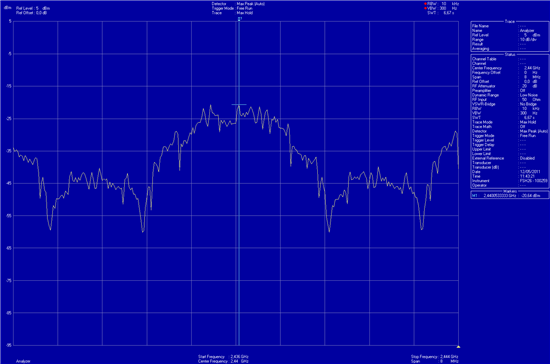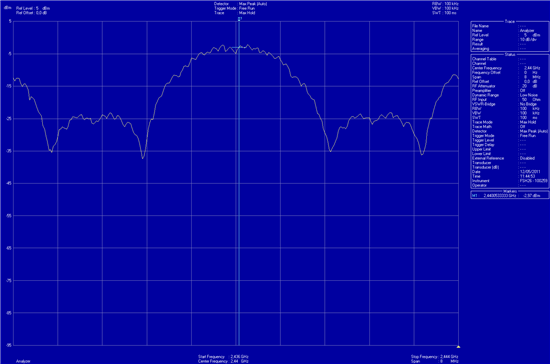Hello, I have been measuring the output signal of CC2520 (chip+balun+pi) without the antenna connecting a coaxial cable and i have seen that depending of spectrum analyzer´s RBW i read different max output power.
The point is that when i reduce the RBW the maximum goes down the same amount of dBs as floor noise. Ok, i think that this is normal as we use DSSS. Anyway if i reduce the RBW i read very low output power for 5dBmCC2520 configuration: -20dBm. RBW=10KHz P=-20dBm RBW=100KHz P=-2.97dBm Am i configuring the spectrum analyzer correctly? Why i see so low signal? If we configure the output power to 5dBm, is 5dBm expected max power or this power is extended over the channel? Thanks a lot!


-
Ask a related question
What is a related question?A related question is a question created from another question. When the related question is created, it will be automatically linked to the original question.

